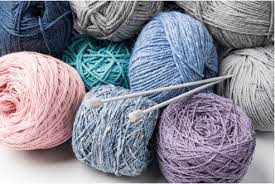An Insight into Growth and Management of Worsted Spinning Mills in India

The spinning mills segment is an integral part of textile mills across textile industries in India and the country also holds a special status in textile industries across the world. In all categories of spinning mills, worsted spinning mills are relevant more specifically in the production of woollen and blended yarns. Wider mordent mills are interested in processing long stapes such as wool and synthetic to spin fine, clear yarn for better quality in textiles. This yarn has been growing fast in demand due to its application in garment, furniture, and technical textile products. This article highlights the worsted spinning mills in india along with their relevance and the threats and prospects of the Mills.
Worsted spinning: it’s not about the process but the result
Worsted spinning is a process through sequential steps that make the fibres reach from the raw stage to supply and compact yarns. There is some distinction of worsted from the other spinning processes regarding the treatment of fibre. In worsted spinning the fibres are first to remove the short fibers together with the various undesirable impurities. It also gives a neat and even yarn free from fuzz which is desirable in fine fabrics.
Significance of Worsted Spinning Mills in India.
Worsted spinning mills of India are leading for the economy of our country and as well as export lots of products to the foreign countries. These mills, being old mills, enjoy the advantages of the availability of skilled manpower, a congenial climate for the textile industry, and a long tradition of weaving and spinning.
- Contribution to Employment: Apart from this worsted spinning mills and other spinning mills in general employ millions of people all over the country, especially the rural areas. They have a very central function in the support of communities as well as boosting local economies.
- Export Potential: Worsted yarn which is manufactured in India is in tremendous demand all over the world. The country exports large quantities of yarn to countries which have a reputation for its woollen textile business.
- Support to Fashion and Apparel: Worsted spinning mills are the principal suppliers to the Indian fashion industry as they provide superior yarn for designer wear apparel, suiting fabrics and luxury textiles.
Through using both traditional knowledge as well as superior technology, the capacity of the country – India – as one of the leading worsted yarn producers increases.
Problems and Prospects Facing the Worsted Spinning Sector
India’s worsted spinning mills have experienced phenomenal growth; however, the industry encompasses numerous problems. However, the subjects and challenges highlighted above have the potential for efficiency improvement and growth.
- Raw Material Sourcing: This is because today the problem of supply and quality of raw wool persists. This is because India has to import fine quality wool as this increases the production cost. Thus, increasing independent production of wool might help to decrease tendencies toward import and, as a result, lower costs.
- Technological Upgradation: The current flow of most of the mills exhibits less mechanized operations and archaic equipment, which affects the efficiency and production of quality fabric. Modern spinning equipment with an automation facility can improve efficiency and competitive opportunity.
- Environmental Sustainability: The textile industry, including spinning mills, has other challenges that are associated with its environmental effects and implications.
- Fluctuating Global Demand: Fluctuating patterns in the process of globalization and fashion trends as well as the changing economic landscape around the world affect the demand for worsted yarn. The above risks can be minimised by expanding into new product lines and experimenting with new and unknown markets.
Further, the worsted spinning sector is complemented by a good number of scopes including government subsidies, skill development programmes and the ‘Make in India’ Initiative.
The Future Prospect of Worsted Spinning Mills in India
Key strategies for growth include:
- Research and Development: To improve yarn properties, utilizing new fibre blends and adopting a state-of-the-art technology by increasing their research and development expenditure.
- Sustainable Practices: The issues under this aspect encompass the Company’s efforts at pursuing an environmentally conscious production process to attain global quality.
India’s worsted spinning mills therefore find themselves in the position between the traditional spinning systems and the newly developed spinning systems. They can persevere as a keystone of the textile manufacturing industry of the world if they enhance their proficiency and eliminate or minimize difficulties.
Conclusion
Worsted spinning mills in India have become an important segment of the textile industry that retains the craft heritage of the country complemented by advanced technology. But again, as the industry struggles with issues like reliance on raw materials and technological deficiency, it is poised for some great potential. Long-term success in the new textile structure requires new strategies which Indian worsted spinning mills are already formulating by putting more emphasis on innovation, sustainability and global competitiveness.



